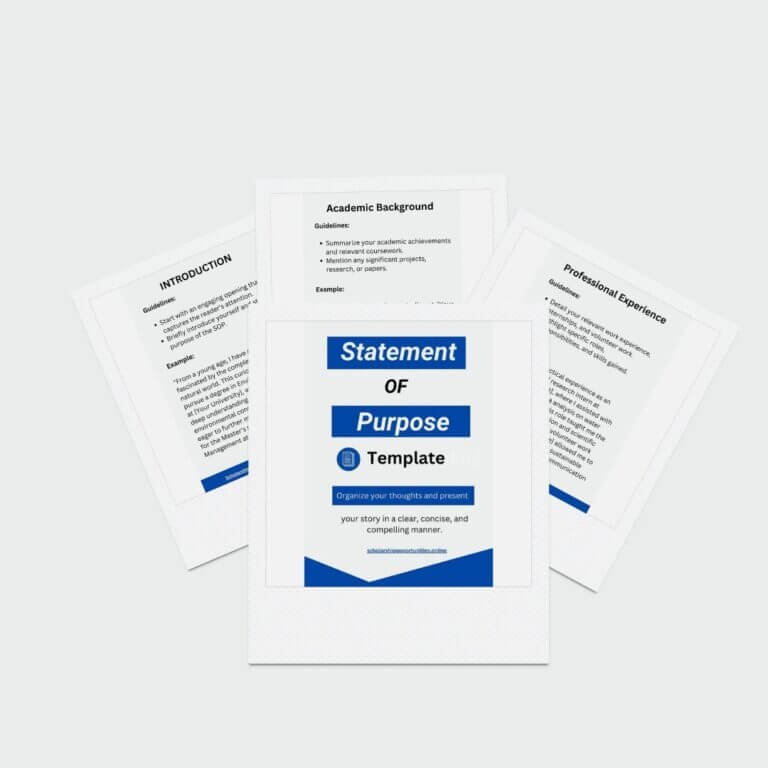How to Write a Perfect Motivational Letter With Sample
A motivational letter is often the make-or-break component of your application process. Whether you’re applying for a university program, internship, or a job, this letter gives you the chance to showcase your passion, qualifications, and aspirations.
It acts as your personal introduction, where you get to tell the decision-makers why you’re an excellent candidate. It’s your opportunity to make a lasting impression and explain why you are the right fit for the program or role you’re applying for.
It’s your opportunity to make a lasting impression and explain why you are the right fit for the program or role you’re applying for. In this guide, we’ll explore everything you need to know How to Write a Perfect Motivational Letter—from structure to writing tips and mistakes to avoid.
Why You Need a Motivational Letter
A motivational letter serves as a crucial supplement to your CV or resume. While your CV outlines your qualifications, experience, and skills, the motivational letter allows you to explain your passion and commitment to the course, program, or job.
It helps decision-makers understand your personal reasons for pursuing this path and why you believe you’re a good fit for it.
If you’re applying to universities, especially in competitive fields or for prestigious scholarships, this letter can be the deciding factor between you and other candidates. It’s a chance to make your case beyond just grades and credentials.
For employers, it shows your enthusiasm for the role and your motivation to contribute to the company’s goals. In short, a motivational letter is your story—it explains why you are the best person to be selected.
May Also Like: Vienna BioCenter Austria Scholarship 2025 PhD & Master Scholarship 2025
Structure of a Perfect Motivational Letter
A well-structured motivational letter is easy to follow and demonstrates your clarity of thought. It should contain six key paragraphs that guide the reader through your background, motivations, and career goals.
Each paragraph has its own specific purpose.
- Introduction
Start by introducing yourself and explaining the purpose of the letter. Clearly state the program or job you are applying for and why. Keep this section short but to the point. Make sure you mention the name of the institution or company and the position or program you’re applying for. - Academic Background
This is where you detail your previous education and qualifications. Mention the degree or certification you obtained, the courses that are relevant to the program, and any academic projects or research that helped shape your interest in this field. - Relevant Experience or Skills
Talk about any professional experience, internships, or volunteer work that is directly related to the program or job. This is also the place to mention any skills you’ve developed that would be beneficial to the role or course. - Why This Program/Position
Here, explain why you have chosen this specific program, university, or job. Highlight what excites you about it, whether it’s the curriculum, the teaching approach, the company’s values, or specific career prospects. Be specific and avoid generic reasons. - Career Goals
Discuss your long-term career aspirations. How will this program or job help you achieve your goals? Show how your ambitions align with the values and outcomes of the program or organization. Be sure to explain how the opportunity will help you make a meaningful contribution in your chosen field.
ALSO READ:
University of Glasgow Scholarships UK: Fully Funded Scholarships for International Students 2025
University of Calabria Italy Admission 2025 for Master: Complete Guide
Sample of a Motivational Letter
To,
The Admission Committee, [University Name]
Dear Admission Committee,
I am excited to apply for the Master’s program in Artificial Intelligence (AI) at the University of Toronto, a field that has fascinated me for years due to its potential to revolutionize industries and improve lives. With a strong academic background in computer science and hands-on experience in AI applications, I am eager to advance my expertise through this prestigious program. I am particularly drawn to the University of Toronto’s commitment to cutting-edge research, interdisciplinary learning, and its focus on both theoretical and applied aspects of AI.
I completed my Bachelor’s degree in Computer Science at The Superior College, Lahore, where I developed a solid foundation in core subjects such as Data Structures and Algorithms, Machine Learning, and Computer Vision. My coursework ignited my interest in AI, particularly in its ability to process complex data and generate meaningful insights. During my undergraduate studies, I worked on a project titled “Automated Fraud Detection System,” where I implemented machine learning techniques such as anomaly detection and supervised learning to identify fraudulent financial transactions. This project reinforced my enthusiasm for AI-driven problem-solving and its real-world applications.
Beyond academics, I gained practical experience during my internship at Code Genetics, Rawalpindi. Here, I was responsible for developing predictive analytics models using AI algorithms. This opportunity allowed me to work with large datasets, optimize machine learning models, and apply theoretical knowledge to practical challenges. Additionally, working in a collaborative environment improved my analytical and problem-solving skills, further solidifying my desire to pursue a specialized education in AI.
The University of Toronto stands out to me because of its rigorous curriculum, emphasis on research, and flexibility in choosing advanced AI specializations. I am particularly interested in modules such as “Advanced Deep Learning,” “Computer Vision,” and “Pattern Recognition,” as they align with my passion for AI-based security solutions and intelligent data processing. I am eager to explore these areas in depth and contribute to research initiatives focused on AI advancements.
My long-term goal is to become an AI specialist focusing on security and risk assessment. AI has vast potential in cybersecurity, fraud detection, and surveillance systems, and I aspire to develop innovative AI-driven solutions to enhance digital security. By joining the University of Toronto, I hope to gain the technical expertise, mentorship, and research opportunities needed to contribute effectively to this evolving field.
In conclusion, I am eager to bring my passion, skills, and experience to the University of Toronto’s Master’s program in AI. I am confident that this program will provide me with the necessary academic and practical training to excel in the field of Artificial Intelligence. Thank you for your time and consideration. I look forward to the opportunity to contribute to the University of Toronto’s dynamic academic community.
Yours sincerely, [Name]
Common Mistakes to Avoid
- Overly General Statements
Avoid vague reasons like “I am applying because your university is well-known.” Instead, be specific about what makes the program or job appealing to you. - Writing Too Much or Too Little
A motivational letter should ideally be one to one-and-a-half pages long. Don’t write more than that. Keep your content concise but thorough. - Long Paragraphs
Avoid long paragraphs. Try to limit them to 8-9 lines max. This keeps your letter readable and easy to follow. - Complex Words or Sentences
While it’s important to sound professional, it’s equally important to keep your language simple and clear. Use short sentences and avoid complicated jargon unless it’s relevant to the field. - Being Generic
Always use specific details. Avoid generic statements that could apply to any applicant. Your letter should reflect your individual experiences and aspirations.
Conclusion
Writing a motivational letter doesn’t have to be intimidating. With the right structure, clear intentions, and specific examples, you can create a letter that will catch the attention of admissions committees or hiring managers.
Whether you’re applying for a university program or a job, remember that the goal of your motivational letter is to show your passion and demonstrate why you are the perfect candidate.
By following this guide, avoiding common mistakes, and tailoring your letter to each application, you can ensure that your motivational letter leaves a positive and lasting impression. Good luck, and may your applications be successful!






